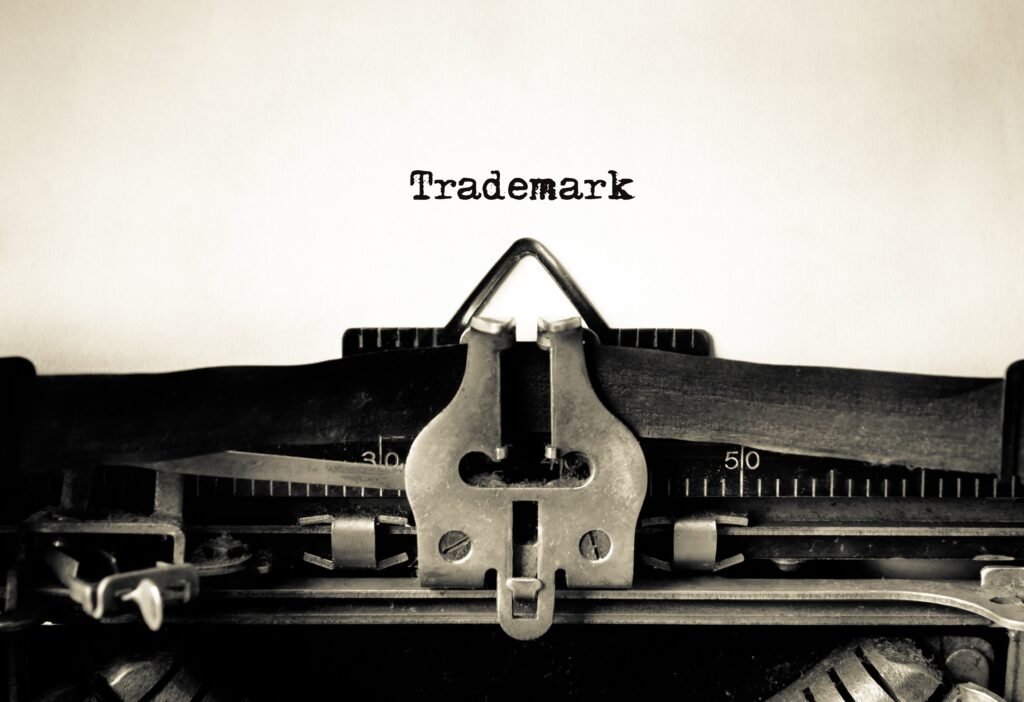Understanding the Criteria and Penalties (Imprisonment & Fines) for 'Trademark Infringement' Through Case Studies

Once you have registered your company name, product name, etc. as a ‘Japanese Trademark Right’, if someone else is using that trademark without permission, you can claim trademark infringement. Furthermore, since trademark infringement is a crime, the infringer may be held criminally liable and potentially face penalties.
How are penalties for trademark infringement determined, and how are they judged?
Penalties for Trademark Infringement
Trademark rights are defined by the Japanese Trademark Law, and Article 78 of this law stipulates the penalties for infringement.
Chapter Nine: Penal Provisions
(Crime of Infringement)
Article 78: An infringer of a trademark right or an exclusive right to use (excluding one who has committed an act that shall be deemed to constitute infringement of a trademark right or an exclusive right to use under Article 37 or Article 67) shall be punished by imprisonment with work for a term not exceeding ten years or a fine not exceeding 10,000,000 yen or combination thereof.
Furthermore, the following provisions may be a bit difficult to interpret, but they also stipulate penalties.
Article 37: The following acts are deemed to constitute infringement of a trademark right or an exclusive right to use:
1. the use of a trademark similar to the registered trademark in connection with the designated goods or designated services, or the use of the registered trademark or a trademark similar thereto in connection with goods or services similar to the designated goods or designated services;
2. the possession for the purpose of assignment, delivery or export of the designated goods, or goods similar to the designated goods or designated services, affixed with the registered trademark or a trademark similar thereto on the goods or their packaging;
(Omitted)
Article 78-2: Any person who has committed an act that is deemed to constitute infringement of a trademark right or an exclusive right to use under Article 37 or Article 67 is subject to punishment by imprisonment for a term not exceeding five years or a fine not exceeding 5,000,000 yen or both.
Trademark Rights Extend to “Similar”s
Simply put, the structure is as follows
- If the same trademark is used for the same product or service → imprisonment for up to 10 years or a fine of up to 10 million yen, or both
- If a similar trademark is used for the same product or service → imprisonment for up to 5 years or a fine of up to 5 million yen, or both
- If the same trademark is used for a similar product or service → imprisonment for up to 5 years or a fine of up to 5 million yen, or both
When a trademark is registered for a certain product or service,
- It can prohibit the use of the same trademark for the same product or service
- It can prohibit the use of a similar trademark for the same product or service
- It can prohibit the use of the same trademark for a similar product or service
It is possible to acquire rights within this range. However, among these, the particularly strong part, or in other words, the part that should be heavily penalized for violations, is 1. Therefore, the severity of the penalties is divided between 1 and 2, 3.
However, the term ‘use’ here is a somewhat special concept. Simply put, a trademark right is a right that can prohibit ‘usage in a manner that can be interpreted as official’.
Trademark Infringement is a “Non-Complaint Offense”
As such, infringement of trademark rights is a criminal offense with established penalties. Therefore, if you are a victim of trademark infringement, you can report the damage to the police and request actions such as arresting. It may be a bit confusing, but trademark infringement is a non-complaint offense. This means that there is no need to file a “complaint” with the police. Simply reporting the damage and effectively requesting an investigation or arrest by the police is sufficient.
Intention is Necessary for Trademark Infringement

However, what is common to all crimes is that a crime does not occur without intention (excluding so-called negligence crimes). For example, if you steal someone else’s property, it is theft. But if you borrow a pen at a friend’s house and accidentally take it home in your pocket, it is not theft. This is because there is no intention (recognition) to steal the pen, and it lacks “intention”.
Similarly, in the case of trademark rights, if there is no recognition of trademark infringement, the crime of trademark infringement does not occur, and it does not become a matter of penalties. So, what exactly does recognition of trademark infringement mean?
- If you investigate whether a trademark is registered for the product and still commit infringement after the investigation
- If you think there might be a trademark registered for the product, but commit infringement without investigating
- If you don’t particularly think that a trademark is registered for the product, and therefore commit infringement without investigating
In which case can we say that there was an “intention for trademark infringement”?
Examples of Counterfeits of Famous Products
When it comes to the sale of counterfeits of famous products, it can be said that there are only a few cases where this point becomes an issue. For example, in cases where counterfeit of Adidas jerseys, Burberry hats, and other famous products were sold, the court has made the following judgment.
The defendant shipped three sets of jerseys with a trademark similar to the trademark (Trademark Registration No. 1893741) for which the German corporation Adidas AG has registered trademark rights for clothing, to two locations including Apartment Z606 in Asakura Nishi-cho, Kochi City, via Yu-Pack and other means, and sold them for a total of 28,500 yen (including postage) to Saburo Mikawa and others through unknowing delivery personnel from around July 8, 2010 (Heisei 22) to around March 25, 2011 (Heisei 23).
Matsuyama District Court Judgment, September 13, 2011 (Heisei 23)
(Omitted)
Given the high degree of trademark infringement and the strong imitation of the crime, a strict attitude is necessary. Also, the trademark rights holders have not received any consolation measures, and their feelings of punishment are severe.
The defendants have committed each of these crimes in an attempt to make easy money, and there is no room for leniency in their casual motives.
This judgment only mentions “similar”, and does not specifically indicate whether the crime was committed with intention. In a sense, it can be said that the judgment is that it is natural to have intention if you are making counterfeits of famous brands. Based on this judgment, the Matsuyama District Court recognized the establishment of the crime of trademark infringement and sentenced the defendant to 1 year and 6 months in prison (with a 4-year suspended sentence) and a fine of 1 million yen.
Generally speaking, in cases where one is creating so-called counterfeits or forgeries themselves, it is natural to have intention and the crime would be charged as they are intentionally selling counterfeits or forgeries without the permission of the rights holder.
Examples of Unauthorized Use of Software Programs

In the field of IT and the Internet, for example, there was a case where a defendant who was selling a program for unauthorized use of a famous software on an online auction site, had listed the name of the “famous software” for the purpose of selling the unauthorized use program. The Tokyo High Court made the following judgment on this case.
It can be said that the fact that it is a product of a software sales company that expands its sales channels worldwide is a circumstance that allows us to recognize the constructive knowledge about the existence of a trademark registration. The defendant did not explain the contents of the software he listed in the advertisement, and it can be inferred that he did not particularly explain it because he recognized that they were famous software to the extent that the demander could understand what they were by their names alone. If it is such software, he must have recognized that there is a high possibility that it is trademark registered. Despite having experience of being convicted of the same kind of trademark law violation regarding software, the defendant was advertising products with a mark similar to the registered trademark without paying attention to the existence or non-existence of trademark registration, such as conducting a trademark registration survey. Therefore, it is clear that there was at least a constructive intent that it might be trademark registered but it does not matter.
Tokyo High Court Judgment, March 10, 2017 (Heisei 29)
(Omission)
The defendant is sentenced to one year in prison and a fine of 1 million yen.
It is not clear from the judgment what the software that the defendant in this case was selling specifically was, but the above judgment is making the following judgment.
- The defendant was only explaining on the auction site that it was a program for “unauthorized use of ●●●”, and it can only be thought that he believed that the purchaser could understand what the program could be used for from that explanation alone.
- The reason why the defendant thought 1 was because ●●● is a famous software.
- If it is 2, he should have naturally known that there is a possibility that such a famous software is trademark registered.
- From 3, there is “dolus eventualis”, and the crime is established.
“Dolus eventualis” is a legal term, but simply put, it is a discussion that says that if you thought “it might be trademark registered, but it doesn’t matter” even though you did not “recognize the existence of trademark registration definitively”, there is intent.
The above judgment recognizes the establishment of a crime based on this discussion and imposes a penalty of one year in prison and a fine of 1 million yen.
Can Malicious Listing Ads be Considered in the Same Way?
Although it’s not a widely discussed topic, it seems plausible to consider that even if it’s not a “counterfeit” or “unauthorized program”, using someone else’s famous trademark knowingly could be considered in the same way. For example, one form of “trademark infringement” that becomes an issue on the internet is trademark infringement in listing ads. If Company A is a well-known company or product, another company, Company B, might target internet users who are searching for Company A and encourage them to access Company B’s site with listing ads like:
Recommended for those who think of Company A when it comes to cosmetics!
In this case too, it can be said that Company B is aware of Company A’s fame and is intentionally misusing it with the above-mentioned ads. If that’s the case, it seems plausible to consider that, as with the above, Company B has “dolus eventualis”, and a crime is established.
Intention of Trademark Infringement and Warning Letters
However, except for cases where the names of well-known products of other companies are intentionally used, such as counterfeit goods and unauthorized use programs, “intention” can become a significant issue. This is the case when one company registers a trademark for a product and another company releases a similar product with a similar name. Although the registration status of trademark rights is public, it is difficult to say, for example, “Whenever naming a product, one should first search for trademark rights, and if they had searched, they could have found it, so there is always intention.”
Therefore, when reporting damage to the police and seeking penalties, it is necessary to create facts and evidence such as “Despite sufficiently sending a warning letter of trademark infringement to the other party, the other party did not change their attitude.” In other words,
- If they simply named the product without noticing, it’s ambiguous whether there was “intention”
- Despite sufficient warnings, if they continued to sell the product without changing their attitude
- At that point, there is an intention of trademark infringement, and it can be said to be a crime
This is the logic.
Therefore, in such cases, if you are seeking penalties against the infringer, “sending a warning letter” can be an important piece of evidence to prove the infringer’s intention. Therefore, it is important to secure “the fact that you, as the right holder, definitely sent a warning letter to the infringer” as evidence. The so-called certified mail is a system that is utilized in such situations. Certified mail means “mail that ‘proves’ the ‘content’,”
Who sent what kind of document to whom and when
This is a mail that provides official proof of these points. Therefore, if you send a warning letter by certified mail, it becomes solid evidence that “a warning was issued regarding trademark infringement.”
Summary
As stated above, trademark infringement is a crime with established penalties. At the very least, in severe cases such as counterfeit goods or unauthorized use of programs, actual arrests, imprisonment for one year, and fines of 1 million yen have been imposed. In the future, not only classical infringement cases such as counterfeit goods, but also new forms of trademark infringement are likely to face similar penalties. However, particularly regarding the aspect of ‘intent’, securing ‘evidence’ is a crucial issue for the establishment of a crime and its penalties. If you fall victim to trademark infringement, it is important to consult with a specialist.
Category: General Corporate
Tag: General CorporateIPO





















